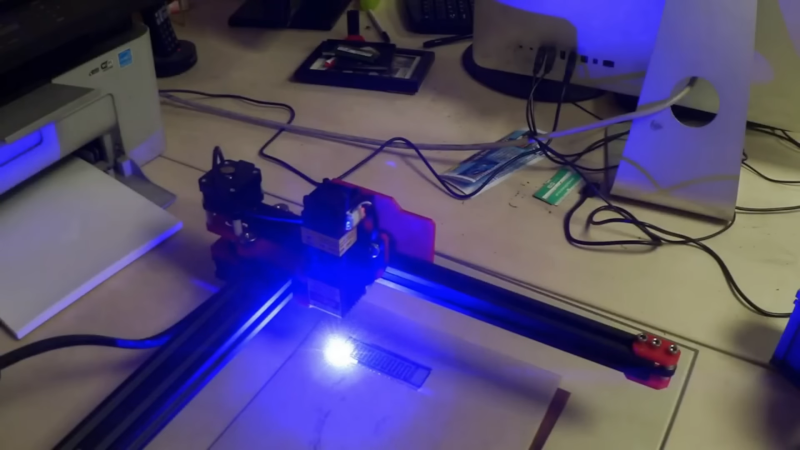Graphene isn’t easy to produce at scale. But making small batches of graphene is doable in a few ways. [Robert Murray-Smith] decided to try producing “flash graphene.” This requires a big capacitor bank that is moderately expensive, so he decided to explain a different technique he read about using an ordinary laser cutter. Check it out in the video below.
We were a little disappointed that he didn’t actually make any graphene this time. He has, however, used other methods in other videos to create some type of graphene. In fact, he has many similar videos going back quite a ways as well as applications with concrete, capacitors, and more. We understand that this method doesn’t produce monolayer graphene, but actually creates a graphene “foam” with interesting properties. [Robert] talks about recent papers that show you can grow graphene on things other than Kapton tape using this method.
If you decide you’d like to try this out, we’d love to see your results. [James Tour] from Rice University has a video about laser-induced graphene that might help you, too. We’ve seen [Zachary Tong] using this method, as well. The flash process is interesting, too, because when compared to most other methods it seems more scalable.
















“The safe way anyone can do”
Yeah we don’t really know that yet. It could very well be hyper-asbestos. Probably don’t make hyper-asbestos in your garage or craft room just yet. It is cool though.
Graphene has been found to be safe for human unlike asbestos, Nanoxplore.ca is the largest producer of graphene in the world, they make TONS or graphene at a very low price.
graphite is literally (and not figuratively) graphene lumped together.
It’s pretty easy to break off graphene flakes of graphite, p.ex. by scraping a piece of graphite over adhesive tape.
From that it seems extremely unlikely that it’s more risky than graphite
Different forms of a material have different risk. A lump of magnesium is not that explosive, a powder of magnesium dispersed in air makes air-fuel bomb (VERY dangerous). A lump of magnesium on the other hand can be easily thrown and hit you like a brick, loose powder will not. Graphite powder is much more nasty than a pencil, and graphene is even more nasty because it’s properties mean than small flakes (MUCH smaller than hair) can even enter some of your cells and disupt their inner workings.
Anyone who has ever used or sharpened a pencil has been almost certainly been exposed to graphene. I think that was Ari’s point. (pun intended).
I don’t think there are noticeable amounts of graphene in graphite dust. If it was that easy to obtain graphene, we wouldn’t need special processes, just maybe some filtration.
Has anyone actually made anything useful with graphene yet? Seems like a meme material.
Stronger epoxies.
https://www.youtube.com/watch?v=3hHoL77QDkg
There was a posting of a new pacemaker made of graphene…it’s a tattoo that is is peeled off a piece of paper and placed on the heart….much better than old pacemakers because it doesn’t come loose…
Also there is a scratch repair for cars with graphene that’s gotten excellent reviews called G3
A road in Yorkshire, England has just been resurfaced with graphene-loaded tarmac to make it last longer. You can buy graphene-containing running shoes from a company called Inov8, that are both strong grip on smooth surfaces and hard-wearing. So, yes.
It might be “easy” but is it safe? Exposed lasers are a horribly bad idea.
A risk which is easily avoided by proper safety glasses and/or a cover.
Lathes and milling machines can suck your arm or the whole of you in if you aren’t careful, too…
Nothing is safe, enjoy the lasers.
Is anybody privately utilizing Graphene, for personal/commercial expexperiments? Is there a discord group or otherwise discussing it more in depth? The creation of a speaker or battery are super intriguing! I would like to present a basic experiment in the STEAM Lab at my daughters school.